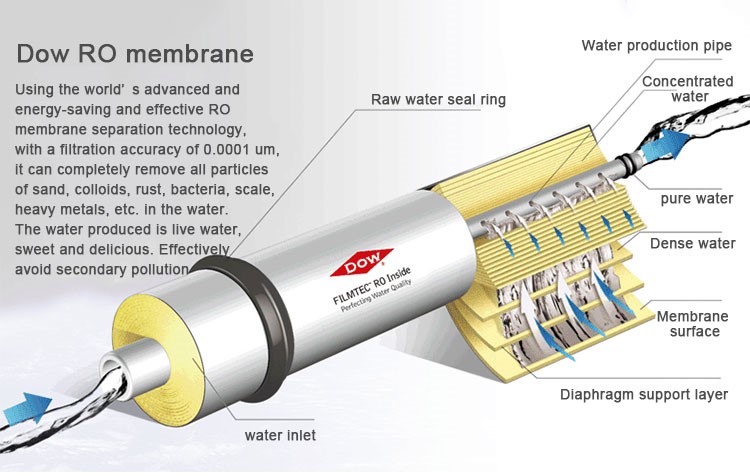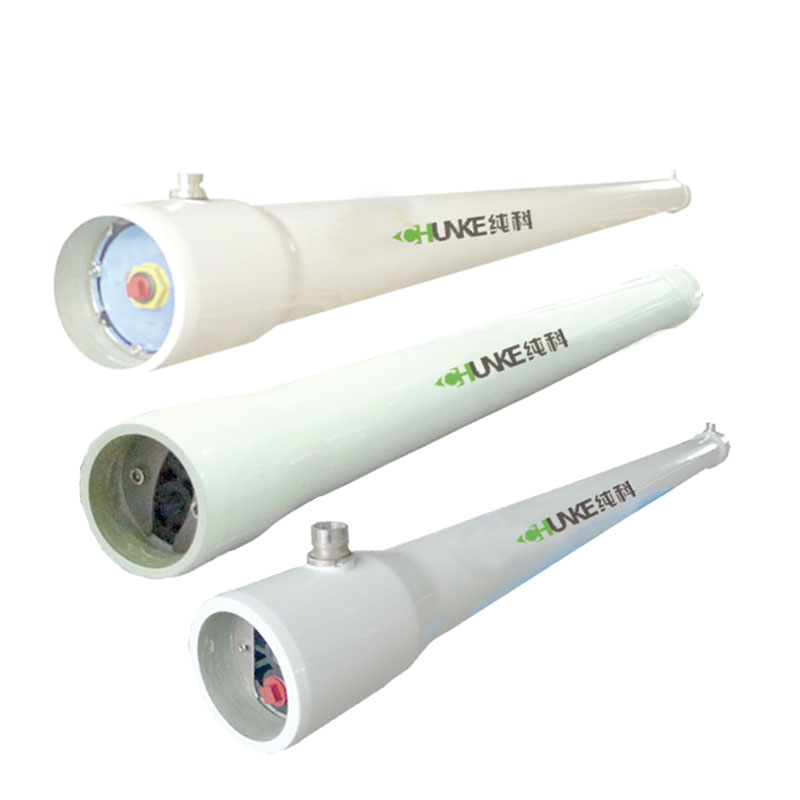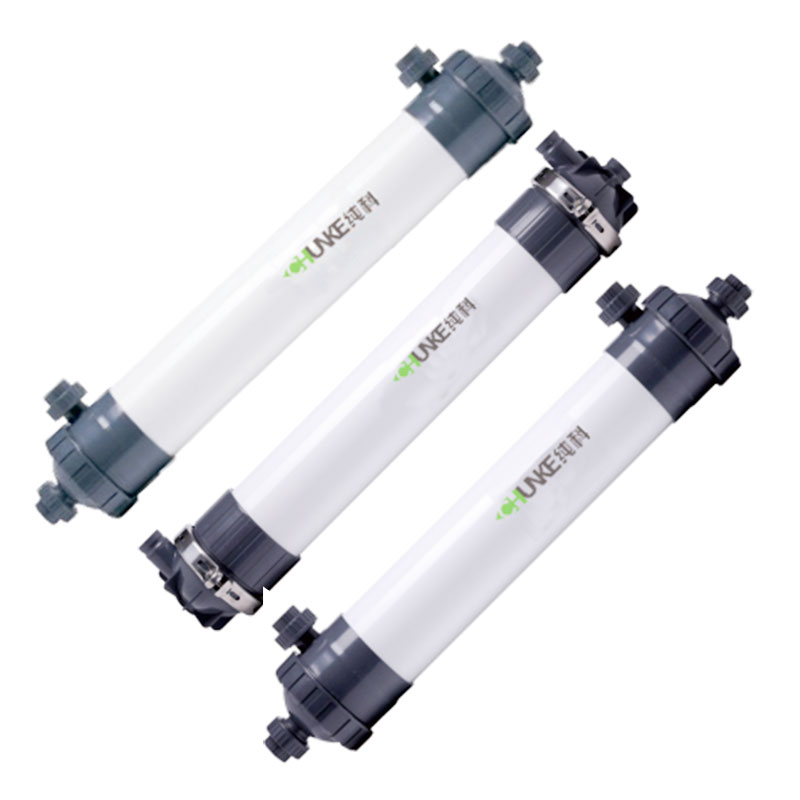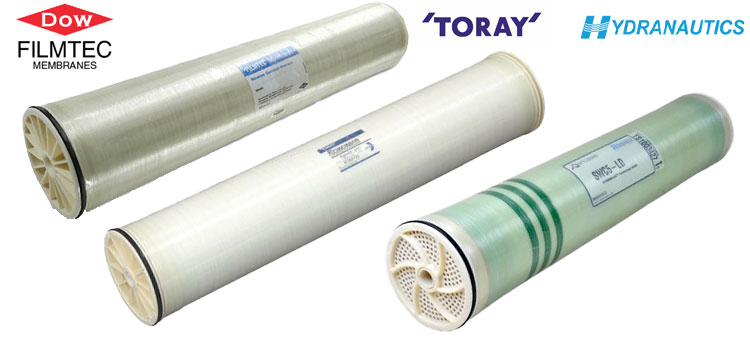How often should reverse osmosis membrane be replaced?
In water treatment systems, reverse osmosis membrane plays a vital role. Understanding the reverse osmosis membrane replacement cycle and its effects is critical to maintaining system performance.
1. Replacement cycle of reverse osmosis membrane
First, let’s discuss the RO membrane replacement cycle. Generally speaking, the average replacement cycle of reverse osmosis membrane is 3-5 years. However, if the RO membrane is still able to produce high-quality water, you may be able to extend its life beyond five years. Therefore, the frequency of replacing the reverse osmosis membrane depends on its operating condition and water quality requirements.
2. Effect of reverse osmosis membrane
Secondly, let us understand the effect of RO membrane. Reverse osmosis membrane is an efficient water treatment technology that can remove 95-99% of dissolved salts (ions), particles, colloids, organic matter, bacteria and pyrogens in feed water. The RO membrane works by removing contaminants based on their size and charge. A properly functioning reverse osmosis system rejects any contaminants with a molecular weight greater than 200, providing clean, healthy drinking water.

How does the reverse osmosis membrane replacement cycle and effect affect the water treatment system?
The replacement cycle and effect of reverse osmosis membrane directly affect the operation of the water treatment system and the purification effect of water quality. Only by regularly replacing the RO membrane and ensuring its effective operation can the normal operation of the system and the safety and reliability of water quality be guaranteed.
First of all, regular replacement of the reverse osmosis membrane can ensure the normal operation of the system and the stability of water quality. If the reverse osmosis membrane is used for too long or is damaged, it may lead to a decline in water quality and even affect people's health. Therefore, timely replacement of the reverse osmosis membrane is key to ensuring the effective operation of the system.
Secondly, the effectiveness of reverse osmosis membrane directly affects the purification effect of the water treatment system. If the RO membrane is not effective, impurities in the water may not be effectively removed, thus affecting the purity of the water. Therefore, choosing a high-quality reverse osmosis membrane and regularly inspecting and maintaining the reverse osmosis system are important measures to ensure water quality safety.

How to tell when the RO membrane needs to be replaced?
1. Water quality test
First, you can determine whether the reverse osmosis membrane needs to be replaced by regularly testing the water quality. Test the content of dissolved solids, microorganisms, organic matter and other contaminants in water to evaluate the filtration effect of the RO membrane and the performance of the system.
2. Observe the water flow
Secondly, observing the water flow of the reverse osmosis system is also an important indicator to determine whether the reverse osmosis membrane needs to be replaced. If the flow of water weakens or becomes erratic, it may mean that the RO membrane is damaged or clogged and needs to be replaced or cleaned.
3. Pay attention to changes in water quality
In addition, paying attention to changes in water quality can also help you determine whether the RO membrane needs to be replaced. If the water quality deteriorates significantly, such as odor, turbidity, or other abnormalities, it may be a sign of reverse osmosis membrane failure and needs to be replaced in time.

How to extend the service life of reverse osmosis membrane?
1. Regular maintenance
First of all, regular maintenance of the reverse osmosis system is the key to extending the service life of the RO membrane. Regular cleaning and replacement of system components and adjustment of system parameters can ensure the normal operation of the system and extend the service life of the reverse osmosis membrane.
2. Control water quality
Secondly, controlling water quality is also an important measure to extend the service life of RO membrane. Avoiding water sources that contain a lot of pollutants and chemicals, and regularly cleaning and disinfecting the water tank can reduce damage to the reverse osmosis membrane and extend its service life.
3. Regularly replace the pretreatment filter element
Finally, regular replacement of the pretreatment filter element can also help extend the life of the reverse osmosis membrane. The pretreatment filter element can filter out large particle pollutants and suspended solids in the water, reduce the burden on the RO membrane, and improve its filtration efficiency and service life.

As a core component in the water treatment system, RO membrane's replacement cycle and effect are crucial to system performance. Understanding how to determine when the RO membrane needs to be replaced and how to extend its service life is of great significance to ensuring the normal operation of the system, improving water quality and saving maintenance costs. Regular maintenance, water quality control, and regular replacement of pretreatment filter elements can help extend the service life of the reverse osmosis membrane and ensure that the system continues to operate efficiently.




